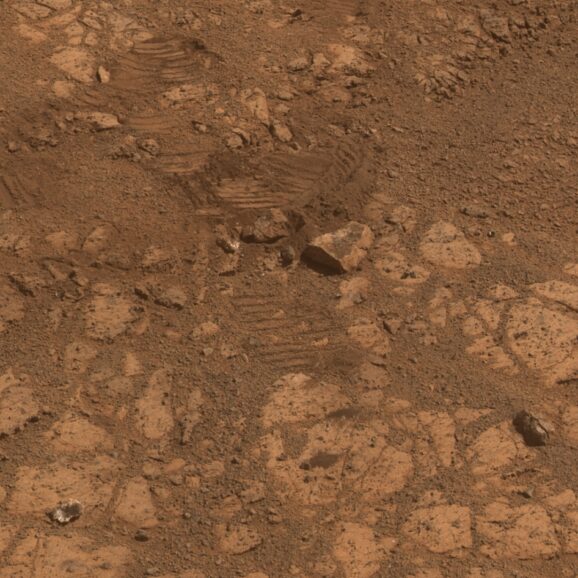Opportunity Rover Solves Rock Mystery
This article is more than 2 years old

Today researchers released photographs showing where Pinnacle Island had been before it found the spotlight a couple weeks ago, and they’ve concluded that the rock broke off of a bigger rock and then was moved by Opportunity’s wheel. Sorry, Joseph — I hope your lawyer took the case on commission.
The Deputy Principal Investigator for Opportunity said that directly uphill from the spot where the now famous photo was taken they spotted an overturned rock that looked just like the jelly doughnut. They also identified Opportunity’s tracks over that rock. An examination of Pinnacle Island showed it to be composed of manganese and sulfur, both of which are water-soluble. Scientists think that, indeed, moving water was responsible for the high concentrations of those elements in the rock, they just don’t know when the rock was formed. It may be relatively young, formed recently beneath the surface of the Red Planet, or it could have happened a long time ago, deep underground, eventually rising to the surfacing via erosion and winds.

Now that Opportunity has closed the case of the mysterious rock, it’s going to drive around the rocky slopes below the McClure-Beverlin Escarpment. The location will help Opportunity harvest some solar power, as it will be able to take advantage of the winter solstice in the southern hemisphere of Mars. Scientists look forward to higher energy available for Opportunity from the strengthening sun and the removal of dust from its solar panels by winds.
I hope Opportunity keeps its eyes open for more mysteries as it continues to investigate Mars — even if it has to help make those mysteries itself.












